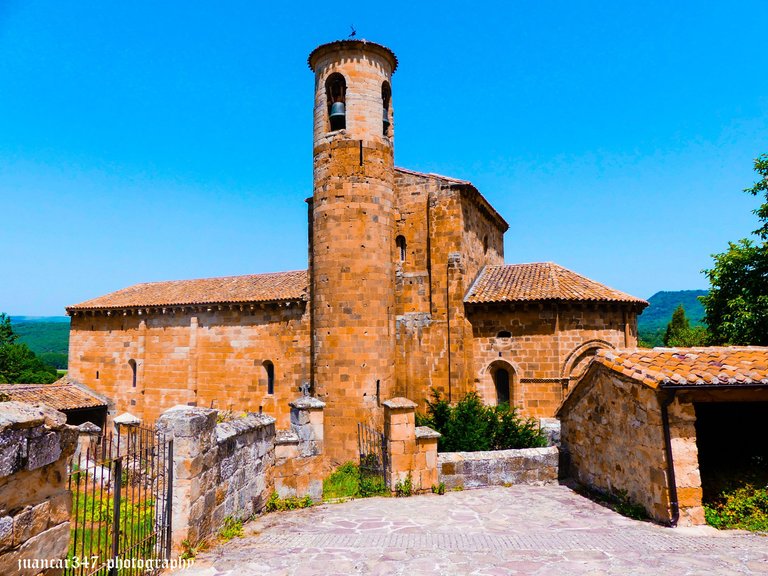[ENG-SPN] Towns, witches and collegiate churches / Pueblos, brujas y colegiatas

Like the Sorian town of Barahona or the Aragonese town of Trasmoz, which inspired some of the dark legends of Gustavo Adolfo Bécquer, the Cantabrian town of Elines also has, in its long history, memories related to witches and enchantments, whose malevolent activities, although it may seem lie, have been recorded until modern times, becoming a taboo subject for the residents of this remote corner of what, in times, was called 'the Asturias of Santillana'.

But Elines also has the privilege of counting among its artistic and cultural heritage, one of the four superb collegiate churches that still, after centuries, hold high the bar for Romanesque architecture in Cantabria. A beautiful and harmonious conjunction of sacred architecture, which, even having lost its original cloister, replaced by simpler gold, although not without a certain charm, still keeps numerous enigmas, as well as the elaborate sarcophagi, skillfully illustrated in their designs, which a day they served as the last resting place of great prelates, of indomitable knights and even of pilgrims who ended here their intentions of following that unique Path of the Stars, in the direction of a place that marked a milestone in the history of Christianity and the West: Compostela.

Como el pueblo soriano de Barahona o el aragonés de Trasmoz, que inspirara algunas de las tenebrosas leyendas de Gustavo Adolfo Bécquer, el pueblo cántabro de Elines tiene también, en su longeva historia, recuerdos relativos a brujas y encantamientos, cuyas malévolas actividades, aunque parezca mentira, se han venido registrando hasta tiempos modernos, llegando a ser un tema tabú para los vecinos de este apartado rincón de lo que, en tiempos, se denominaba como ‘las Asturias de Santillana’.

Pero Elines tiene, además, el privilegio de contar entre su patrimonio artístico y cultural, con una de las cuatro soberbias colegiatas que todavía, al cabo de los siglos, mantienen en alto el listón de la arquitectura románica de Cantabria. Una preciosa y armoniosa conjunción de arquitectura sagrada, que, aun habiendo perdido su claustro original, sustituido por oro más sencillo, aunque no exento de cierto encanto, guarda todavía numerosos enigmas, así como los elaborados sarcófagos, hábilmente ilustrados en sus diseños, que un día sirvieron como última morada de grandes prelados, de caballeros indómitos e incluso de peregrinos que terminaron aquí sus propósitos de seguir ese singular Camino de las Estrellas, en dirección a un lugar que marcó un hito en la historia de la Cristiandad y de Occidente: Compostela.

NOTICE: Both the text and the accompanying photographs are my exclusive intellectual property and are therefore subject to my Copyright.
AVISO: Tanto el texto, como las fotografías que lo acompañan, son de mi exclusiva propiedad intelectual y por lo tanto, están sujetos a mis Derechos de Autor.

What a history!
The pictures are lovely too
Thank-you very much
The pictures are really beautiful to admire
Thank-you
The town looks good, the architectural structures also look great and magnificent, the stonemasons who made it were clearly well skilled. And it still looks good after so many years. Thanks for sharing and have a nice day.
They were skilled architects who built these works so that they would last over time. Their dedication, mastery and craftsmanship is what has allowed us to know and enjoy them.
Though it really looks like a small town but this is blessed with a lot of wonderful buildings
It is a typical rural architecture of the area.
https://twitter.com/lee19389/status/1765178833639031073
#hive #posh